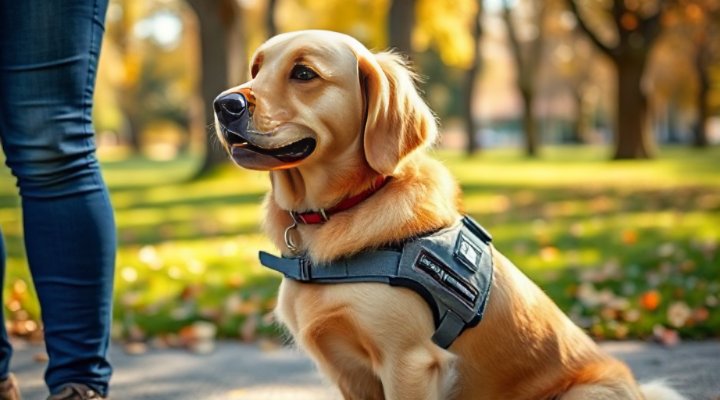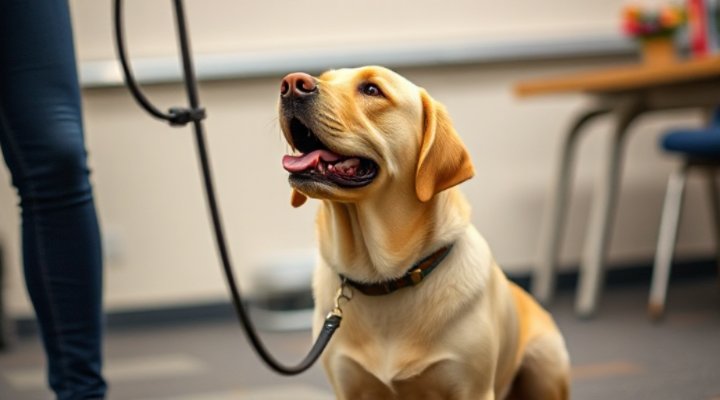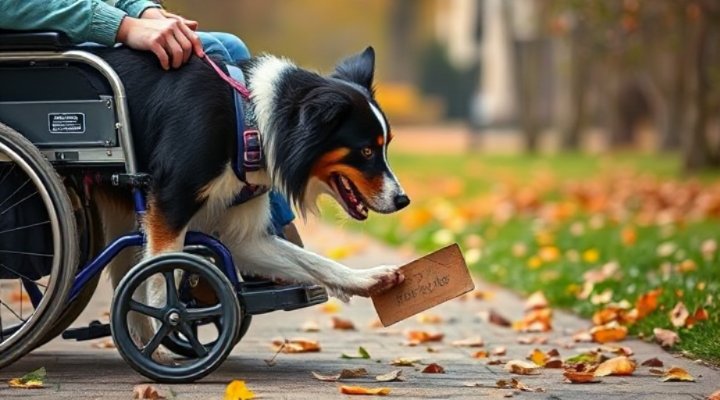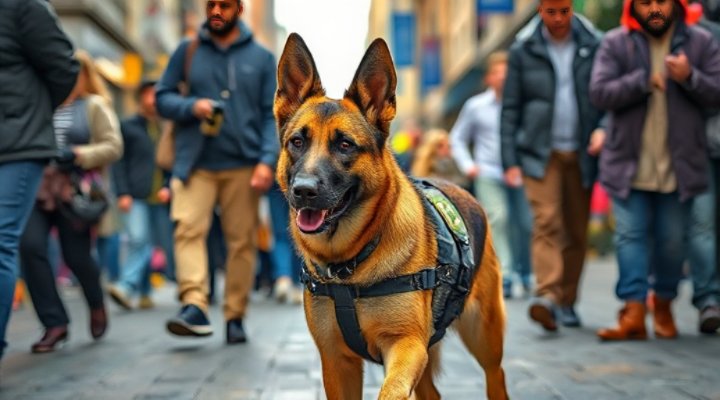Training a service dog is a rewarding yet challenging journey. The best service dog training techniques combine patience, consistency, and positive reinforcement to ensure your dog can perform its duties reliably. Whether you’re starting with a puppy or refining an older dog’s skills, these methods will guide you from basic commands to advanced tasks.

Basic Commands: The Foundation of Service Dog Training
Every service dog must master basic commands like ‘sit,’ ‘stay,’ ‘come,’ and ‘heel.’ These commands form the foundation for more advanced tasks. For example, teaching your dog to ‘sit’ and ‘stay’ can prevent them from bolting into dangerous situations. Meanwhile, ‘heel’ ensures they walk calmly beside you, which is crucial in public spaces.
Positive reinforcement is key here. Reward your dog with treats, praise, or playtime when they follow commands correctly. Consistency is equally important; practice these commands daily in various environments to reinforce their learning. If you’re looking for high-quality treats to aid in training, check out our guide on best dog treats for training.

Advanced Tasks: Tailoring Training to Specific Needs
Once your dog has mastered basic commands, you can move on to advanced tasks tailored to your specific needs. For instance, a service dog for someone with mobility issues might learn to retrieve items, open doors, or provide balance support. On the other hand, a psychiatric service dog might be trained to recognize and interrupt anxiety attacks.
Break down complex tasks into smaller, manageable steps. For example, if you’re teaching your dog to retrieve an item, start by encouraging them to pick it up, then gradually increase the distance. Always reward progress, no matter how small. For more tips on advanced training, the ADA’s guide on service animals is a great resource.

Socialization: Preparing Your Dog for Public Spaces
Service dogs must remain calm and focused in various environments, from busy streets to quiet offices. Socialization is crucial for this. Expose your dog to different sights, sounds, and people early on. Start in controlled settings and gradually increase the complexity of the environments.
For example, take your dog to a park, then a pet-friendly store, and finally a busier area like a train station. Reward calm behavior and correct any signs of anxiety or distraction. Remember, a well-socialized service dog is a confident and reliable partner. If you’re also training a puppy, our best puppy food guide can help ensure they get the nutrition they need for optimal growth and learning.

Common Challenges and How to Overcome Them
Training a service dog isn’t without its challenges. Distractions, stubbornness, and occasional setbacks are normal. The key is to stay patient and consistent. If your dog struggles with a particular task, revisit the basics and break the task into smaller steps.
For instance, if your dog gets distracted during ‘stay’ commands, practice in a quieter environment first. Gradually introduce distractions as they improve. Above all, avoid punishment-based training methods, as these can damage your dog’s trust and confidence. Instead, focus on positive reinforcement and celebrate small victories.
Building a Strong Bond with Your Service Dog
A strong bond between you and your service dog is the cornerstone of successful training. Spend quality time together outside of training sessions. Play games, go for walks, or simply relax together. This strengthens your connection and makes your dog more eager to please you during training.
Additionally, pay attention to your dog’s health and well-being. A healthy dog is more capable of learning and performing tasks. For tips on maintaining your dog’s health, check out our article on grain-free dog food benefits.

Conclusion: The Journey to a Reliable Service Dog
Training a service dog is a journey that requires dedication, patience, and the right techniques. From basic commands to advanced tasks, each step builds toward a reliable and efficient service dog. Remember, every dog learns at their own pace, so celebrate progress and stay consistent.
For further reading, the American Kennel Club’s guide on service dog training offers additional insights. With time and effort, you and your service dog will form an unbreakable team, ready to take on any challenge together.
Related Keywords: service dog training, dog training techniques, advanced dog training, service dog commands, training a service dog
